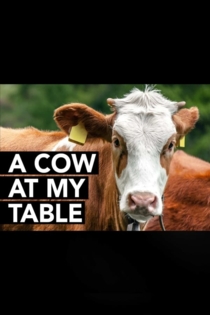
Jennifer Abbott
2021Description above from the Wikipedia article Jennifer Abbott, licensed under CC-BY-SA,full list of contributors on Wikipedia.
A Cow at My Table
Jennifer Abbott
Susan Kitchen, Susan Schafers
A Cow at My Table explores Western attitudes towards farm animals and meat, and the intense battle between animal advocates and the meat industry to influence the consumer's mind. Five years in production took Director Jennifer Abbott across Canada, the US, Australia and New Zealand to meet with the leaders of the animal rights movement, animal welfare advocates as well as spokespeople from livestock industries. A Cow at My Table inter-cuts these diverse perspectives with archival films, images from modern-day agribusiness and footage of farm animals shot from uncharacteristic vantage points.
A Cow at My Table

The Magnitude of All Things
Jennifer Abbott
Jennifer Abbott, Tara Samuel
Filmmaker Jennifer Abbott explores the emotional and psychological dimensions of the climate crisis and the relationship between grief and hope in times of personal and planetary change.
The Magnitude of All Things

The Corporation
Jennifer Abbott, Mark Achbar
Jane Akre, Ray Anderson
Since the late 18th century American legal decision that the business corporation organizational model is legally a person, it has become a dominant economic, political and social force around the globe. This film takes an in-depth psychological examination of the organization model through various case studies. What the study illustrates is that in the its behaviour, this type of "person" typically acts like a dangerously destructive psychopath without conscience. Furthermore, we see the profound threat this psychopath has for our world and our future, but also how the people with courage, intelligence and determination can do to stop it.
The Corporation

Skinned
Jennifer Abbott, David Odhiambo
Jennifer Abbott, David Odhiambo
The myths of the priapic Black stud and the White woman beauty ideal collide in this rhythmically constructed work about identity and desire. Skinned explores the specific historic, psychological and social implications of relationships between Black men and White women. Using their bodies as a point of juncture, the artists blatantly situate the viewer as voyeur while identifying this physical realm as the arena within which cultural communities and individuals oppose interracial relationships. Ultimately, the multiplicity of images and voices calls into question the validity of definitive truths and the authoritative voice.
Skinned



